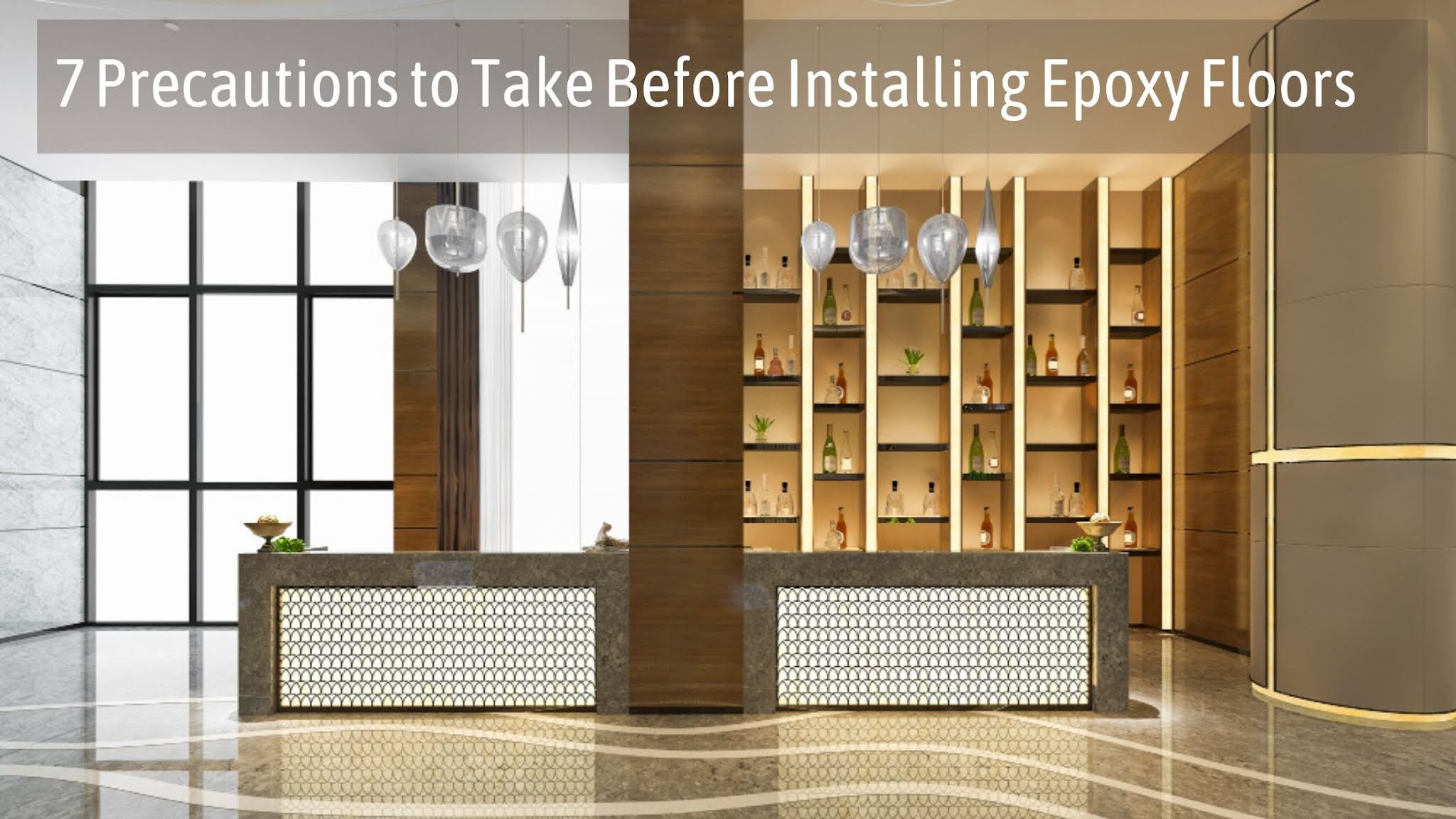This article will bring you all those precautions to take before installing to enjoy advantages of epoxy flooring.
So, what causes flooring products to fail?
Here go the seven reasons:
1. Poor surface preparation:
If you are going to coat epoxy onto an old surface, you need to make sure that the surface is ready to install an epoxy coat. You need to grind the surface, you need to clean it, you need to dry, it must be dust-free, surface preparing has to go properly before able to coat it with epoxies.
2. Humidity
The second main reason that we have identified is humidity: You need to know epoxy products, they do not bond well with humidity; I'm talking about solvent-based epoxy products here. So, when you are coating epoxy on surfaces, you have to make sure that the surface is completely dry.
You don't want any wetness and humidity, make sure there are no pipes or taps dripping and of course, make sure there's no humidity from beneath the ground sometimes in areas near rivers and marshes may actually get humidity entering, maybe rising up to the substrate, make sure you don't have a problem there otherwise your epoxy floor will fail.
Check lovehomegym.com post for gym floor thickness. Post Link: Gym Floor Thickness For Your Home Gym 2024
3. Weak Substrate
The third main reason why epoxy floors might fail, a weak substrate: This happens when you coat the epoxy floor product onto a low-quality cement what ends up happening is, the cement is too weak to handle and it ends up cracking the floor.
So, it's not actually the epoxy floor that failed but it's the cement beneath that's failed. And the slide explains that the cement actually detaches itself from the cement.
4. No primer or absence of correct primer
You must prime the surface before going flooring installation and make sure you use a soluble primer. The primer seals the pores, penetrates the pores, it makes it more convenient for adhesion and bonding to take place.
You want to make sure that this coat is going to bond well with the concrete and the primer will act as an intermediate layer that will enable that bonding. Keep in mind floors experience heavy wear and tear don't assume that industrial floor squiggles are simply stick to a block of concrete, so make sure to use high standard primer that will help in that respect.
5. Incomplete Surface
The fifth reason why the epoxy floors fail, incompatible surfaces: This is quite an important one, it doesn't happen as often but it's quite important. What happens, the substrate may not be compatible with epoxies.
One example is you never coat epoxy on the wood because what happens, wood is very flexible. If it's kind of flexible the material that bends and breaks apart. If you try putting epoxy in something that bends, the epoxy will crack because, epoxy is much firmer than the wood, so it will crack.
So, you want to make sure that whatever you put underneath has the same sort of strength. As epoxy is like strong concrete. You don't want to coat around the wood, you don't want to coat on a sheet of metal you don't want to coat it on something that's flexible like P.V.C. lining.
6. Contaminated Floors
The sixth and main reason why epoxy floors may fail, Contaminated floors: This problem is quite common in old installations. For example, an old floor of a factory or maybe a car service shop, a workshop where over the years, the floor has been polluted with various oils and greases, and all types of chemicals. What happens, if you try to actually coat epoxy on that, it will get a reaction and there will be no bonding that can take place. That's why it's very important to rapidly clean the surface.
7. Wrong Mixing of Resin and Hardener
Finally, the seventh reason we have identified is the wrong resin and hardener mix: What do we mean by these? Epoxy in order to pack systems that have a hardener and a resin. You need to have a proper mix of two before you actually apply the product.
Usually, these come supplied in pre-packaged amounts and one mistake people make is, they kind of assume that you don't need to weigh exactly is proportions of the A-component and the B-component.
They just think all of this mixing together they'll be fine, that is actually the wrong thing to do.
Make sure that you are mixing the product in specified proportions. Also, make sure to use a real electrical mixer. Some people think they can just stick a stick and mix the product like that, it will not work.
You need an electrical mixer that's powerful enough to form a uniform mixture throughout the bucket. Your epoxy will be sticky if it doesn't cure properly, you may end up having the wrong proportion of the resin versus the hardener. And their epoxy might be sticky, it might be soft and it will never ever cure. So, make sure you don't ever get that mixing wrong. Basically, mix it properly by following the instructions.
These are the seven precautions that we can take before installing epoxy flooring. There are numbers of flooring options are available to choose but epoxy makes the greater choice among the people because of its style and cost efficiency.
Check Home Decor Write For Us category for detailed information.
